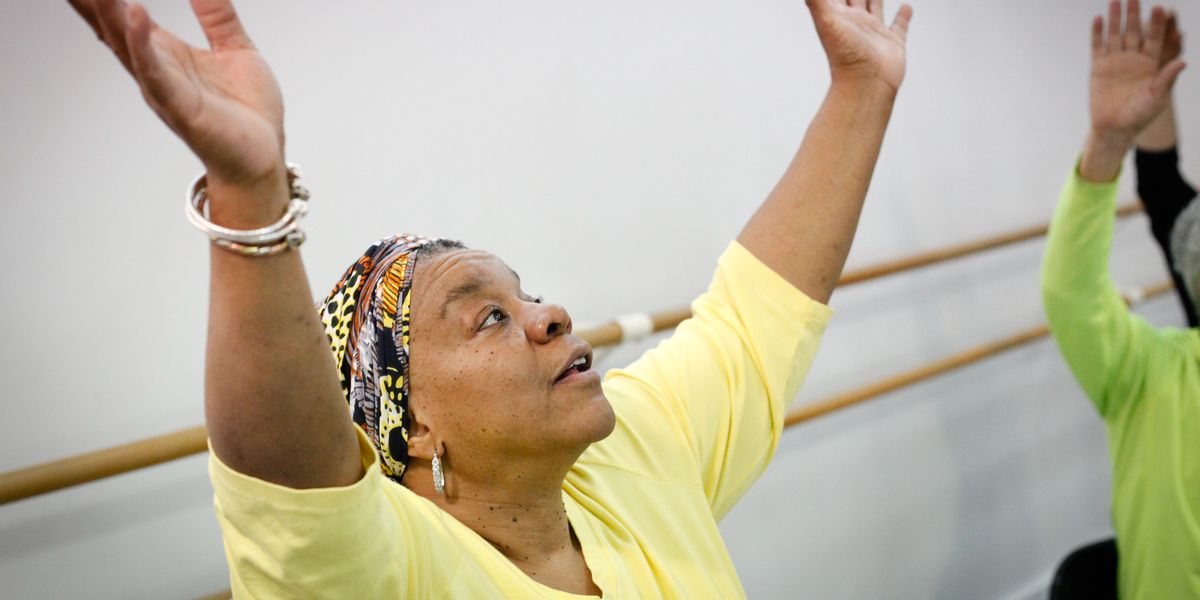The Pandemic Has Helped Dance for PD Reach More People Than Ever
When COVID-19 forced the Dance for PD program at Mark Morris Dance Center to discontinue in-person classes on March 15, it was done with the same uncertainty that we all felt going into lockdown. How long will this last? How can we keep dancing?
Dance for PD, which uses movement to help those living with Parkinson’s, was also faced with the question of how they could continue to serve a highly vulnerable population. What they found were solutions that will forever change the way that they serve their community.
The Dance for PD program provides dance instruction to those living with Parkinson’s and has been proven, through more than 38 peer-reviewed studies, to improve the quality of life of its participants. According to program director and former MMDG dancer David Leventhal, pre-COVID, the New York program had nine locations across the city providing in-person classes.
When the organization was forced to put all programming online, enrollment doubled, Leventhal says. “We went from having about 650 people participating regularly in our New York classes to having 1,300 people online.” Students now come from North America, South America, Europe and Africa.
But not all newcomers are from far away. At least 10 percent of the new virtual-class participants are living in New York City, which shows they likely knew about Dance for PD, but unseen barriers previously prevented them from attending. “Coming into a group in any area can be a bit intimidating, and I think in dance, it can be quite intimidating,” says Leventhal. “You have people coming into a group class, and they have never danced before, and they are also dealing with a new diagnosis. And that can be a lot to process.” Additionally, the physical limitations caused by Parkinson’s make traversing New York City transit to get to a class more difficult than logging on from your living room.
While group classes provide needed social support for many, newly diagnosed patients often fear attending because “they don’t want to see what their trajectory would be like,” says Leventhal. “One of the things that we tell them is that we don’t know what everyone’s trajectory will be like with Parkinson’s. It is a very individual experience.” But on Zoom, if someone does not want to see the other participants, they can curate a private class experience by pinning only the teacher’s screen.
Additionally, Leventhal points out that many people with a new diagnosis do not want others to know about it. They may fear their employers will find out; some may not have even told their friends and family about the diagnosis while they process it. “Since we have moved to an all-online class experience, we have noticed that those anxieties have melted away,” he says. Those who seek privacy can turn off their camera and even change their name.
To replicate the social interactions that happen after class in the studio, Dance for PD has been using breakout rooms for discussions, but participants who don’t wish to take part can simply log off rather than feel awkward exiting the studio without talking to anyone.
While the participation increases have been staggering, Leventhal and his team acknowledge that the move to virtual has also led to new populations being excluded. Not everyone has access to an internet connection, and others may feel uncomfortable with a computer. To try to reach these populations, Dance for PD has been offering a call-in meditation two times each week. The program is also piloting a toll-free phone number (800.957.1046) that leads the user through a series of prompts for prerecorded dance activities.
Unencumbered by geography, the move to virtual has also fast-tracked better language access. A new partnership with the Muhammad Ali Parkinson Center in Phoenix, Arizona, has meant that Dance for PD can launch a class twice a month in Spanish, with plans to go weekly in 2021. “There were more than 100 people in the first class,” says Leventhal. “This collaborator already had access to all of these people who come to their support groups.” Classes in Mandarin or Cantonese are being planned.
“There is no going back,” says Leventhal. “We will have to maintain an online, live presence where people can join around the world.” And while the logistics of that are daunting, the pandemic has ironically ended up enhancing the ability of Dance for PD to reach more people.




